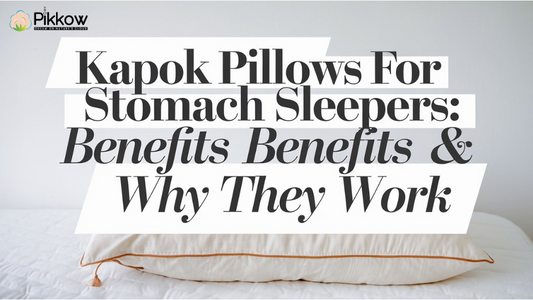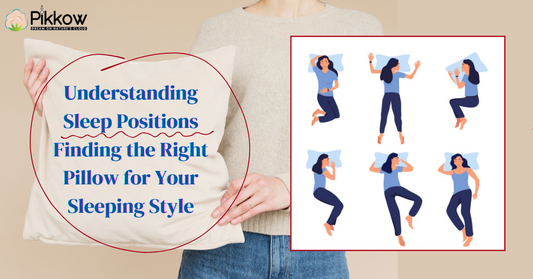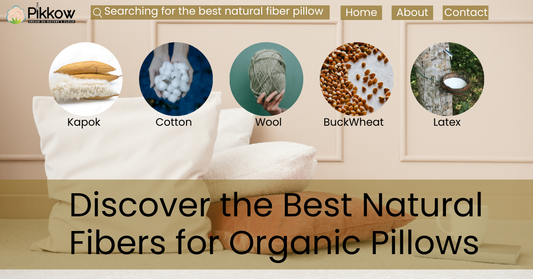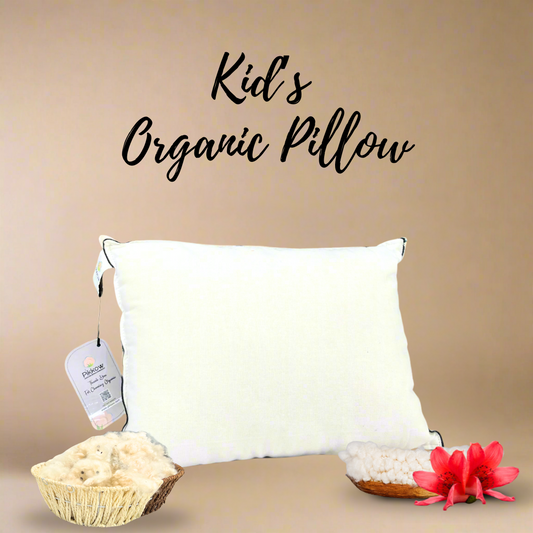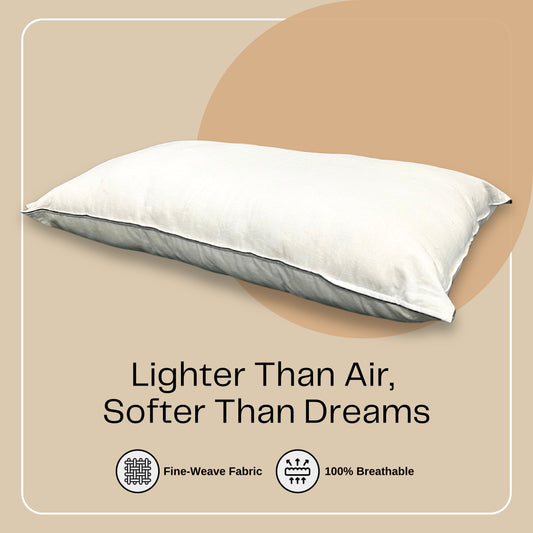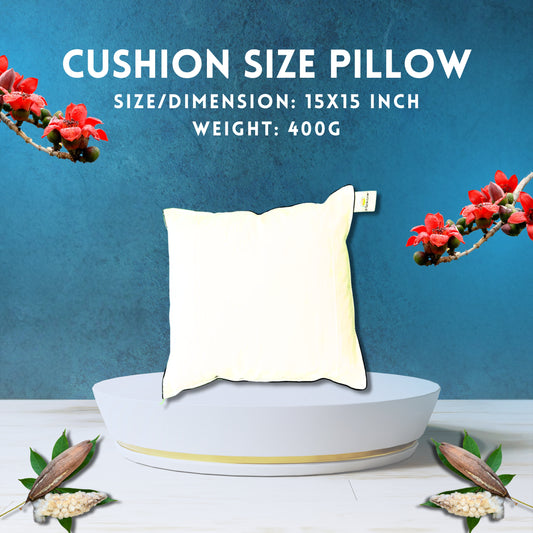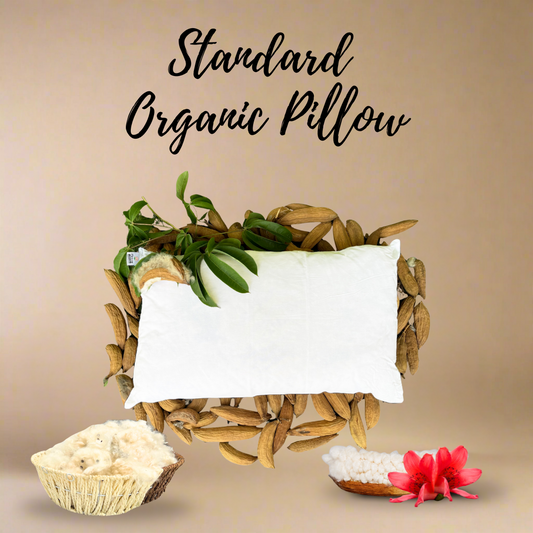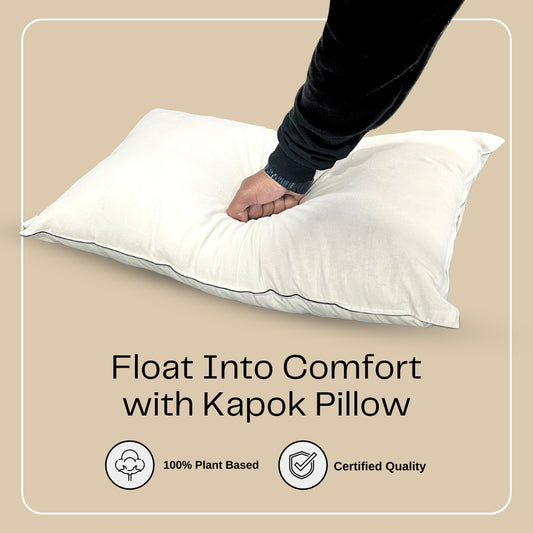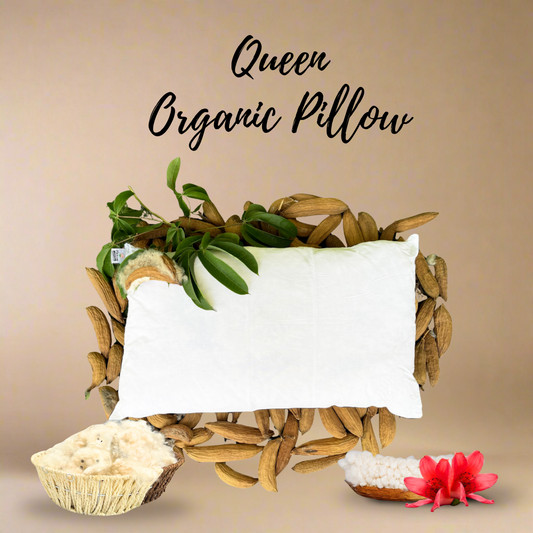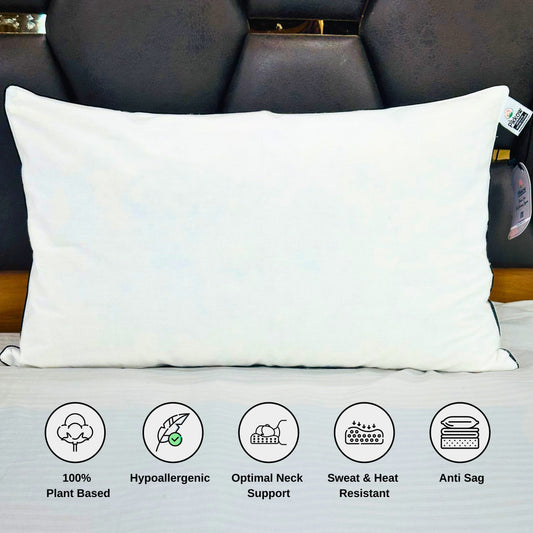We spend nearly one-third of our lives sleeping—but how often do we think about what we’re laying our heads on each night? If you’ve recently switched to an organic pillow or invested in natural bedding, you might be wondering: “Do I need pillow protectors?” The answer is more important than you think.
There is a secret world behind the fluffy, soft surface of your pillow: bacteria, sweat, dead skin cells, and dust mites that are subtly accumulating every night. And if your pillow is made with natural fill like kapok, cotton, or wool, it’s even more vulnerable to moisture and contamination. The truth is, without a proper pillow protector, your organic pillow could wear out faster, lose its shape, or even trigger allergies.
In this blog, we’ll uncover the real reasons why pillow protectors matter for natural pillows, how they can extend pillow lifespan naturally, and why using one might just be the smartest bedding upgrade you’ll ever make.
The Dirty Secret Lurking in Your Pillow
Have you ever wondered what’s really inside your pillow? If you think it's just filling and fluff, you might be in for a surprise. Research shows that an unprotected pillow can accumulate:
- Over 1 million dust mites
- Sweat, oils, and dead skin cells from your face and scalp
- Bacteria, mold, and even fungi in damp environments
If you’re using an organic pillow, these contaminants are even more damaging. Organic materials like kapok, wool, and cotton are breathable but highly absorbent. That’s why the question “do I need pillow protectors?” is more important than ever—especially if you’re trying to keep your bedding healthy and long-lasting.
Without a pillow protector:
- Your pillow absorbs everything
- The inside becomes a breeding ground for allergens
- You'll notice fluffiness loss after washing pillow
- And replacing it becomes inevitable far too soon
What Is a Pillow Protector and Why It’s Different from a Pillowcase
A pillow protector is a zippered barrier that sits between your pillow and the pillowcase. It’s designed to shield your pillow from moisture, dust, and allergens, unlike a standard pillowcase that is mostly decorative.
Pillow Protector vs Pillowcase: What's the Difference?
|
Feature |
Pillow Protector |
Pillowcase |
|
Purpose |
Protective cover |
Decorative cover |
|
Design |
Zippered, sealed |
Open-ended or envelope |
|
Protects Against |
Sweat, dust, allergens, bacteria |
Minimal protection |
|
Material Options |
Organic cotton, bamboo, waterproof options |
Cotton, silk, linen |
|
Wash Frequency |
Every 2–4 weeks |
Weekly |
When it comes to organic bedding, pillow protectors for kapok pillows, latex, and wool are highly recommended because they help protect organic pillow from dust and sweat, extending their life naturally.
Why Organic Pillows Need Extra Care
Organic pillows are made with natural, eco-friendly fillings that are soft, breathable, and chemical-free—but also sensitive to moisture and over-washing. These materials include:
- Kapok – ultra-light and fluffy, but clumps when wet
- Organic wool – temperature-regulating but absorbs odors
- Natural latex – durable but degrades when overly moist
- Organic cotton – breathable, yet absorbs sweat easily
Washing organic pillows regularly can:
- Cause fluffiness loss
- Lead to lumps or misshaped pillows
- Reduce their overall lifespan
- Be difficult, time-consuming, and even damaging
So, it’s better to avoid washing organic pillows as much as possible—and a good pillow protector can help you do just that.
Top Benefits of Using Pillow Protectors for Organic Pillows
Wondering how pillow protectors can actually help? Here are the top reasons why they’re a must-have—especially if you care about natural bedding and eco-friendly pillow care.
Organic Pillow Protector Benefits:
- Extend pillow lifespan naturally by keeping the inner filling untouched
- Maintain shape and fluffiness even after months of use
- Protect organic pillow from dust and sweat, reducing the need for washing
- Prevent organic pillow damage caused by moisture and body oils
- Reduce allergens in natural pillows by blocking dust mites and mold
- Save time and money with fewer washes and replacements
With vs. Without a Pillow Protector
|
Feature |
With Pillow Protector |
Without Pillow Protector |
|
Shape Retention |
Maintains loft & support |
Flattened and lumpy |
|
Hygiene |
Clean, allergen-free surface |
Accumulates bacteria & allergens |
|
Cleaning |
Wash the cover, not the pillow |
Risk of damaging the fill |
|
Eco-Friendliness |
Less water, detergent, and waste |
Higher carbon footprint |
|
Cost Efficiency |
Pillow lasts 2–3x longer |
Frequent replacement |
If you're using natural-fill pillows, especially kapok or latex, do pillow protectors help organic pillows? Absolutely—they’re essential to long-term care and comfort.
Eco-Friendly Bedding Tip: Wash the Cover, Not the Pillow
Organic pillows are fragile when it comes to washing. Instead of throwing them into the washer and risking their shape, focus on how to clean pillows without washing them directly.
Natural Pillow Care Tips:
- Wash the pillow protector every 2–4 weeks
- Use cold water and natural detergent
- Air dry instead of machine drying
- Spot clean the pillow only if needed
This simple shift not only preserves your pillow but is also one of the best ways to protect organic bedding and reduce water usage, detergent chemicals, and energy waste.
Final Verdict: Do I Really Need Pillow Protectors?
Still asking, “do I need pillow protectors?” Let’s wrap it up:
Yes, you absolutely do—especially if you’re using organic pillows.
Without a protector, your pillow is vulnerable to:
- Dust and allergens
- Sweat and body oils
- Washing damage
- Shape distortion
- Shortened lifespan
With a pillow protector, you gain:
- Cleaner sleep surface
- Better hygiene
- Long-lasting pillow fluffiness
- Eco-friendly bedding care
- Peace of mind
Looking to make your organic pillow last longer? Don’t skip the protector.
Whether you have a kapok, wool, latex, or cotton pillow, a zippered organic protector is one of the smartest, simplest upgrades you can make for healthier sleep and a sustainable lifestyle.
FAQs
1. Do pillow protectors make you sweat?
Not at all—organic pillow protectors made from cotton or bamboo are breathable, lightweight, and moisture-wicking. They enhance comfort without overheating.
2. Are pillow protectors noisy or uncomfortable?
Cheap plastic covers can be noisy, but high-quality hypoallergenic pillow protectors for organic pillows are soft, silent, and feel just like a regular pillowcase.
3. Can I use a protector with kapok or wool pillows?
Yes! In fact, you should. Pillow protectors for kapok pillows are ideal because kapok is especially sensitive to moisture and needs protection to maintain its shape and softness.
4. Are protectors good for kids’ or travel pillows?
Definitely. Kids are messy, and travel pillows see heavy use. A protector will prevent organic pillow damage, keep things cleaner, and cut down on wear.
5. How do I keep organic pillows clean without washing them?
Use a zippered pillow protector, wash the cover regularly, and air out the pillow monthly. This is the most effective organic pillow care guide to follow.


